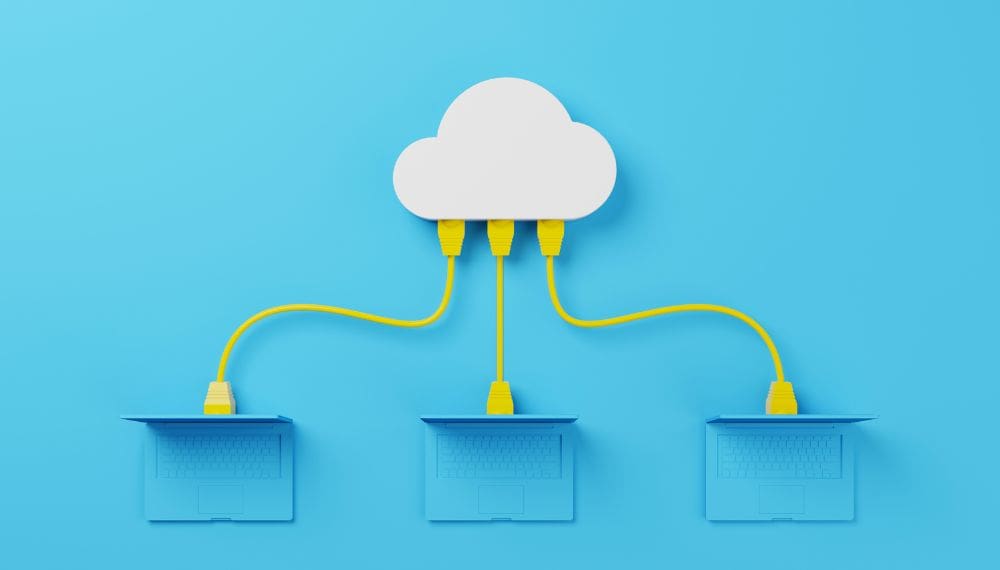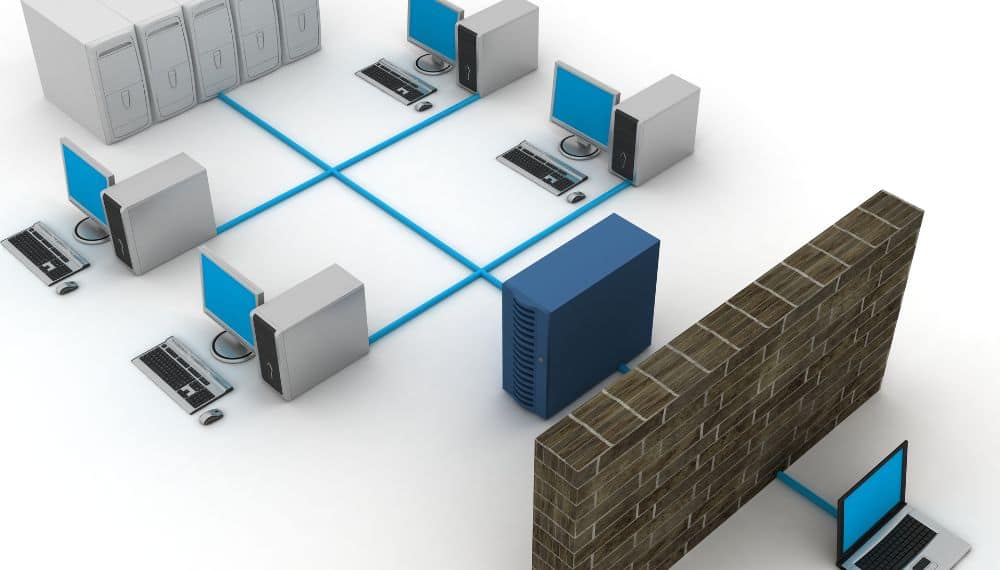- 11th Sep, 2023
- No Comments
What Are Common Security Issues in Cloud Applications?

Virtually every business nowadays makes use of cloud-based software. Major cloud security vulnerabilities may be mitigated if an organization’s cloud security plan takes into account concerns associated with cloud adoption and integration. This article will discuss the common security issues in cloud applications.
Most companies are shifting their workflows to cloud platforms and applications so as to move faster and with more agility, ultimately gaining a competitive edge. It is important to proceed with care when adopting cloud technology without first thoroughly knowing all of the potential downsides. Failed operations during cloud migration may be avoided with a better understanding of the potential threats involved.
A number of security issues and concerns arise when it comes to cloud applications; for example, when data is stored and accessed by third-party providers on the cloud, less oversight and management are available.
The security of data in cloud-based applications is very important as the dangers that come up in the cloud environment have no exact timing to arrive, which makes the whole security process uncertain.
To address the security issues related to cloud apps, implementation of appropriate solutions can be done, but that will work only when the risks and issues are totally understood.
What are Cloud Applications?
Cloud apps are services and programs that are hosted on remote servers and accessed through the internet rather than locally.
Unlike traditional desktop software, cloud applications don’t require installation on individual devices since they operate on the provider’s infrastructure.
Services like customer relationship management (CRM), enterprise resource planning (ERP), collaboration tools, file storage, and more may all be found in the cloud, along with a variety of other functions that are typically missed.
Cloud apps are invaluable as they have the capability to push businesses towards scalability and that too with a high level of flexibility, thus helping businesses to expand into many other industries and gain a significant customer base.
Common Security Issues in Cloud Applications

1. Data Breach
Due to the high stakes involved in a cyberattack, data typically serves as the first line of defence, with vulnerabilities such as cloud misconfigurations and insufficient runtime protection potentially allowing thieves to steal this information in the event of a data breach.
Identity theft and phishing emails are two common uses for the personal information (PII) and health information (PHI) that criminals sell on the dark web, and data breaches represent a serious threat to organizations because sensitive information can be exploited to harm the company’s reputation or stock price.
2. Misconfiguration
The cloud environment evolves over time as more and more services are made available. Multiple suppliers are used by many firms nowadays.
These companies give a wide variety of predefined settings, and each service has its own special touches and implementations. Insecure cloud services will continue to be a target for hostile actors until companies learn how to properly secure them.
3. Mismanagement of Attack Surface
The term “attack surface” is used to describe how exposed your system is. Putting more work out into the open may be made possible via the usage of microservices. The attack surface grows with each additional effort. Without careful oversight, your infrastructure might get compromised without you even realizing it until it’s too late. No one welcomes the call in the middle of the night.
4. Security Risk Due to Human Error
The use of the public cloud in the development of commercial applications increases the already present danger of human mistakes. The intuitive nature of the cloud may cause users to make unauthorized API calls without adequate monitoring.
Solid controls are needed if human errors are to be minimized, thus helping people work in the right way and reduce the impact of mistakes. Also, systems sometimes make mistakes, and mistakes made by them can’t be blamed on specific people as everything is automated most of the time.
Efficient procedures and safeguards against system overrides are something that can help with system-related errors; however, not without human intervention.
5. Cyberattacks
A cyber-attack happens when hackers or cybercriminals gain unauthorized to the admin area of the cloud application or the system on which it operates. Commonly, cyber-attacks are executed with the use of various tactics that can include phishing, installing spyware, SQL injection, or even a DDoS attack.
6. Insider Threat
An insider threat in cybersecurity originates from within an organization, usually from a current or former employee or someone with direct access to the network, intellectual property (IP), sensitive data, and knowledge of the organization’s operational procedures, policies, or other information necessary to execute such an attack.
7. Unauthorized Access
Instead of being located inside a company’s internal network, cloud-based installations are hosted outside and are accessible over the internet. Users and consumers alike profit from this facilitated access, but it also raises a security concern.
It is possible for attackers to get unauthorized access to a company’s cloud-based services without the company’s knowledge if security measures are not set properly or credentials are compromised.
8. Data Leaks
A data leak usually happens when an insider employee or partner of the company has access to private or sensitive information of the company, which allows hackers to exploit their accounts and break into the cloud admin area, leading to a data leak.
When businesses go to cloud computing, they must give up some authority to the CSP. As a result, the security of your company’s most sensitive information may be the responsibility of others outside of your IT department. Your business stands to lose intellectual property and sensitive information in the event of a breach or attack on the CSP, and you may be held liable for the costs incurred as a consequence.
9. Insecure APIs
Badly thought-out APIs run the danger of exposing sensitive information without sufficient controls, which might result in large financial losses, damage user confidence, and expose the system to new attackers.
The rate limitations of many APIs are either ineffective or unrealistically high. Because of this shortcoming, the application may have performance difficulties as a result of an excessive number of API requests, which might be disruptive. While temporarily disabling the API may solve some issues, it will have a negative effect on users.
If API throttling rules aren’t taken into account, performance might degrade dramatically. Your service ecosystem might experience disruptions in throughput if users overburden the available resources.
Choose APIs with throttle and rate-limiting options to solve these problems. Controlling the rate at which APIs are called may increase reliability, boost performance, and ward off attackers. Try to find ways to restrict user actions on several levels (API, app, and underlying resources).
10. Flawed Due Diligence
While many of the problems we’ve discussed thus far are technological in nature, this security hole becomes apparent when a business has a clear plan for its objectives, resources, and cloud security measures. In other words, it all comes down to people.
A company’s cloud security might be at risk if it rushes into a multi-cloud deployment without first considering how to fulfil customers’ needs.
11. Account Hijacking
Enterprises’ increasing reliance on cloud computing raises new concerns about data security. This includes the possibility of hackers breaking into your cloud storage remotely using your or your workers’ login credentials and then utilizing those credentials to view, modify, or forge your data.
12. Cloud Service Abuse
Due to the vast storage capacity of the cloud, both legitimate users and hackers may now store and disseminate dangerous software, illegal applications, and other digital assets, making the storage of massive amounts of data a breeze for businesses of all sizes.
Both the cloud service provider and its customers might be negatively impacted by this approach. For instance, direct or indirect security threats might be exacerbated if privileged users violate the service provider’s terms of service.
How to Secure Cloud Applications?

Below are detailed recommended practices for securing cloud-based applications, which should be implemented to guarantee the security of cloud-based software and the servers that host it.
1. Monitoring the Threats Regularly
It is crucial to keep constant monitoring against cyber risks after programs have been moved to the cloud. Since the application security threat environment is always evolving, it is crucial to make use of threat intelligence data in order to remain proactive in the face of adversarial actors. This allows dev teams to identify vulnerabilities in cloud apps and fix them before they impact consumers.
2. Use Automation While Security Testing
With DevSecOps, automated security testing is effortlessly integrated into development. To do this, vulnerabilities must be automatically scanned at every stage of the CI/CD pipeline. Before deploying to the cloud, this technique verifies the integrity of all relevant code, including the applications’ source code and open-source libraries, as well as the container images and infrastructure settings.
To further aid the “shifting left” of cloud application security, developer-friendly security screening technologies should be integrated into current development processes. The costs of finding and fixing vulnerabilities are drastically reduced when testing is shifted to the left. It also guarantees that developers can keep up a fast rate of code distribution.
3. Make Use of Identity Access Management
Integration of security measures like Identity and Access Management (IAM) into enterprise-wide security procedures is crucial due to the interconnected nature of applications, as IAM ensures that only authorized individuals may access sensitive information and functionalities within an application by requiring authentication from every user, ultimately improving cloud application security and bolstering an organization’s overall security posture.
Conclusion

The cloud offers fresh chances for data storage, accessibility, flexibility, and efficiency, but it has also given birth to new security risks; to overcome these challenges, familiarity with the most pressing issues in cloud security is needed.
You and your team will be better able to safeguard your business from threats in the multi-cloud environment if you have this information.
Whether you’re just getting started with cloud computing or are currently reaping its benefits, working with a cloud solutions provider is your best bet for foolproof high-level security.
